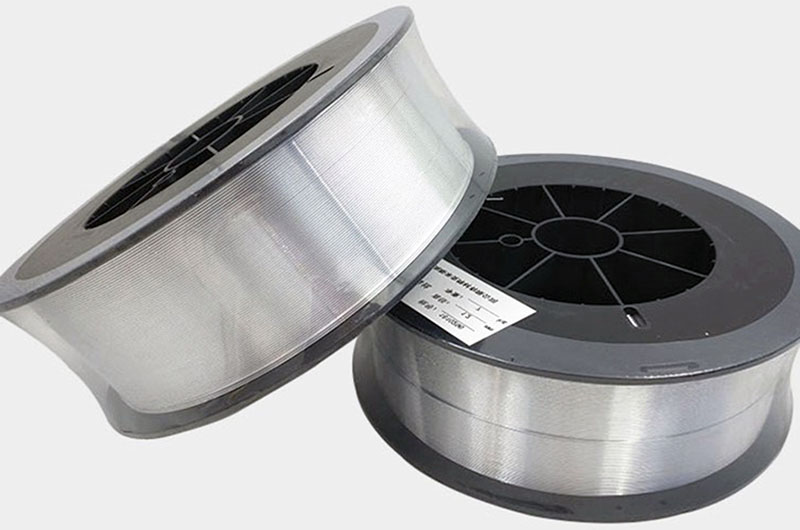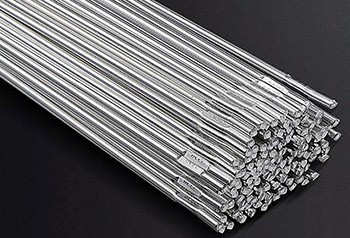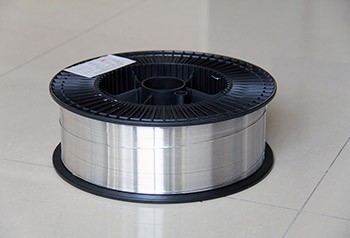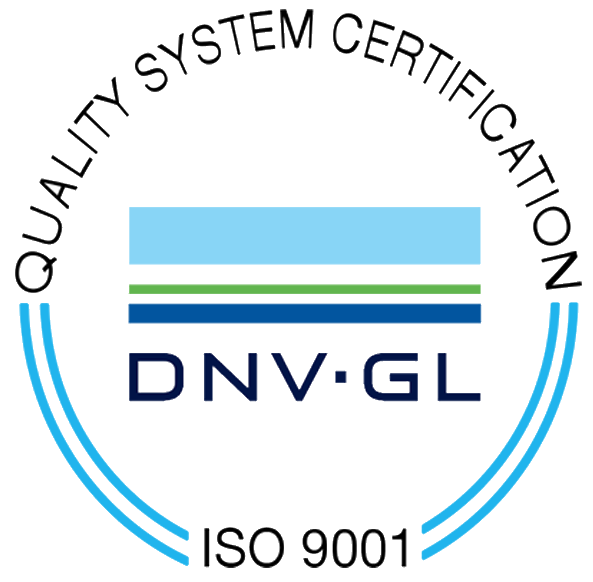Marine grade aluminum welding wire
Marine grade aluminum welding wire refers to a specific type of welding wire designed to weld aluminum alloys commonly used in marine applications. Marine aluminum welding wire is primarily intended for use in various marine applications such as shipbuilding, offshore structures and ship equipment repairs.
-
ER5356 Marine grade aluminum welding wire
ER5356 Marine Grade Aluminum Welding Wire is a high quality welding consumable specifically designed to handle marine welding, providing excellent corrosion resistance, strength and weldability.
-
ER5183 Marine grade aluminum welding wire
The combination of corrosion resistance, high strength, weldability and anodizing capabilities make 5183 aluminum alloy the first choice for marine aluminum welding applications.
Aluminum alloys for ships can be divided into aluminum alloys for hull structures, aluminum alloys for outfitting and aluminum alloys for welding according to their uses. For marine aluminum welding wires, it is recommended to use standard ER5183 or 5356 aluminum-magnesium welding wires.
Marine grade aluminum welding wire refers to a specific type of welding wire designed to weld aluminum alloys commonly used in marine applications. Marine aluminum welding wire is primarily intended for use in various marine applications such as shipbuilding, offshore structures and ship equipment repairs.
Marine aluminum welding wire is typically characterized by high corrosion resistance, strength and weldability, making it suitable for use in marine environments where there is frequent exposure to salt water and harsh conditions.

Welding of marine aluminum alloys
There are some unique challenges when welding marine aluminum alloys.
- 1. The oxide film (Al2O3) on the aluminum surface has a high melting point, a large specific gravity, and is easy to absorb moisture. This oxide film may hinder the mutual fusion of the weld metals, leading to the formation of oxide inclusions and dense pores, thus affecting the quality of the weld.
- 2. The physical properties of aluminum also add challenges during the welding process. The expansion coefficient of aluminum is twice that of steel, but the elastic modulus is only 1/3 of steel, and the thermal conductivity is 5 times that of steel. This means that under the same welding conditions, the deformation of aluminum alloys is much greater than that of steel structures.
In response to these characteristics, we need to take some specific process measures to ensure welding quality and control deformation. Through correct process selection and operation, the impact of oxide films can be effectively reduced and the deformation of marine aluminum alloys during the welding process can be controlled. These measures ensure that the quality of the welds meets standard requirements while minimizing possible defects.
Welding methods of marine aluminum alloy
Commonly used welding methods for aluminum alloys are tungsten inert gas welding (TIG welding) and melting inert gas welding (MIG welding).
TIG welding uses the refractory metal tungsten or its alloy as an electrode and is welded under the protection of an inert gas (usually argon). It usually uses AC power and uses the cathode atomization effect to clean the oxide film on the surface of the aluminum alloy and improve the welding performance.
MIG welding uses welding wire (5183/5356) as the electrode and filler metal, and is welded under inert gas protection. Since the welding wire is used as the electrode, high-density welding current can be used, so the base metal has large penetration, the filler metal is deposited quickly, and the deformation of the weldment is smaller than that of TIG welding, which can effectively ensure the quality requirements of the weld.
Typical marine aluminum welding wire
5183 marine aluminum welding wire is a specially formulated aluminum welding wire with a magnesium content of close to 5% and a more prominent manganese content. It is mainly used in situations where there are strict requirements on tensile strength, such as welding tasks where the tensile strength is required to be above 276MPa. It is especially suitable for welding tasks that require high magnesium content.
5356 Marine Aluminum Welding Wire is another type of aluminum welding wire that contains more than 5% magnesium and a higher content of manganese. It has excellent corrosion resistance and high resistance to thermal cracking. After anodizing, the welded joints appear white. This color matching provides good support for the visual beauty of the welded joints. This type of welding wire is usually used for argon arc welding of aluminum alloys with high magnesium content and can be used as filler material.
Marine aluminum welding wire specifications
| Alloy | 5183 | 5356 |
| Wire diameter | 0.8 - 1.0 - 1.2 - 1.6 mm | |
| Wire spool size | D300(9kg), D270 (7kg), D200 (2kg), D100 (0.5kg) | |
| Packaging | Wire spool, straight wire, coil wire, barrel | |
| Features | 5% magnesium content, strong versatility, high strength, and good color after welding. | |
| Recommended soldering method | .Gas Shield Argon 100% | |
| Welding Position | All positions for butt welding except vertical downwards (PA,PF,PC,PE) | |

Marine Aluminum Welding Wire Chemical Composition
| Element | Composition % | |
| 5183 | 5356 | |
| Si | 0.40 | 0.25 |
| Fe | 0.40 | 0.40 |
| Cu | 0.10 | 0.10 |
| Mn | 0.50-1.00 | 0.05-0.20 |
| Mg | 4.3-5.2 | 4.5-5.5 |
| Cr | 0.05-0.25 | 0.05-0.20 |
| Ni | - | - |
| Zn | 0.25 | 0.10 |
| Ti | 0.15 | 0.06-0.20 |
| Be | 0.0005 | 0.00 |
| Al | Remainder | |
Marine aluminum welding wire Physical properties
| Physical property | ER5183 | ER5356 |
| Tension strength (MPa) | 275-300 | 250-300 |
| Yield strength (MPa) | 125-140 | 110-140 |
| Elongation (%) | 15-20 | 15-25 |
| Melting temperature℃ | 574-638 | 575-633 |
| Thermal conductivity w/m•K | 120 | 120 |
| Linear expansion coefficient 10-6/K(20-100℃) | 24.2 | 24.1 |
| Electric conductivity % IACS | 29 | 29 |
Allowable deviation of ER5183 ER5356 Marine grade aluminum welding wire
| Wire Category | Reel-mounted wire | Hollow coil wire | Straight wire |
| Diameter allowable deviation/mm | -0.02 | -0.02 | ±0.10 |
| Diameter allowable deviation/mm | - | - | ±2 |
Marine grade aluminum welding wire applications
- Shipbuilding: Marine grade aluminum welding wire is extensively used in shipbuilding for constructing hulls, decks, bulkheads, and other structural components. Aluminum's lightweight properties make it desirable for improving fuel efficiency and reducing the overall weight of the vessel.
- Offshore Structures: Welding wire is used in the fabrication of offshore platforms, rigs, and other offshore structures. These structures are constantly exposed to harsh marine environments, including saltwater and atmospheric corrosion, making marine-grade aluminum an ideal choice due to its corrosion resistance.
- Boat Building: Aluminum welding wire is used in the construction of boats and watercraft of various sizes, from recreational boats to commercial vessels. The corrosion resistance of marine-grade aluminum ensures longevity and minimal maintenance requirements, making it suitable for marine environments.
- Marina Equipment: Welding wire is employed in manufacturing various marine equipment such as docks, piers, gangways, and marina facilities. These structures are exposed to saltwater and other corrosive elements, making marine-grade aluminum an excellent choice for their construction.
- Fishing Industry: Aluminum welding wire is used in the fabrication of fishing boats, pontoons, and equipment such as fishing rod holders, frames, and storage compartments. The lightweight nature of aluminum enhances maneuverability and fuel efficiency for fishing vessels.
- Underwater Applications: Marine-grade aluminum welding wire is utilized in the fabrication of underwater structures such as underwater pipelines, subsea equipment, and marine exploration vehicles. Its corrosion resistance and durability are essential for withstanding the harsh conditions underwater.
- Marine Renewable Energy: In the development of marine renewable energy technologies such as offshore wind turbines, tidal energy systems, and wave energy converters, marine-grade aluminum welding wire may be used in the fabrication of support structures and components.
Marine grade aluminum welding wire is indispensable in a variety of marine applications due to its corrosion resistance, durability and lightweight properties, making it the material of choice for construction in marine environments.
How to choose marine aluminum welding wire?
The choice of 5183 and 5356 marine aluminum welding wire depends on several factors, such as the specific application, the type of aluminum being welded, and the required mechanical properties of the welded joint.
Here are some considerations to help you decide:
1. Aluminum alloy compatibility
5183 and 5356 wires are commonly used for welding marine grade aluminum alloys. However, their compatibility with specific alloys may vary. For example, 5356 is commonly used to weld alloys 5050, 5052, 5083, 5356, and 5454, while 5183 is commonly used to weld alloys 5086 and 5456.
2. Mechanical properties
Each wire has its own set of mechanical properties. 5183 tends to offer better strength and crack resistance, making it suitable for applications requiring higher mechanical properties. 5356, on the other hand, offers better corrosion resistance.
3. Welding technology and location
Consider the welding technique and location you will use. 5356 wire is generally more durable and easier to use, making it a good choice for beginners or for welding in a variety of positions. Because 5183 has higher strength and crack resistance, more skill and control may be required.
4. Environmental factors
If the welded parts will be exposed to the harsh marine environment of salt water and corrosion, then the corrosion resistance of the welding wire becomes critical. In this case, 5356 may be preferred due to its excellent corrosion resistance.
5. Cost and Availability
Consider the cost and availability of each wire type in your area. While both lines are common, price or accessibility may vary depending on your location.
In summary, evaluate the specific requirements of your welding project, including the aluminum alloy, required mechanical properties, environmental factors, and your skill level as a welder to make an informed decision between 5183 and 5356 marine aluminum welding wire.
Things to note when purchasing Marine grade aluminum welding wire
When purchasing marine grade aluminum welding wire, there are several key factors to consider to ensure you are getting the right product for your needs:
- 1. Alloy Type: Marine applications often require aluminum alloys with high corrosion resistance, make sure the welding wire you choose is compatible with the specific alloy you are using.
- 2. Welding wire diameter: Choose the appropriate welding wire diameter according to the thickness of the aluminum to be welded. Thicker materials generally require larger diameter wires for optimal weld penetration and strength.
- 3. Quality and Purity: Look for welding wire that meets industry standards for quality and purity. Higher purity welding wire is less likely to contain impurities that can cause weld defects.
- 4. Corrosion resistance: The marine environment exposes materials to corrosive elements such as salt water, so it is crucial to choose welding wire with excellent corrosion resistance. Look for wire specifically labeled "marine grade" or suitable for marine applications.
- 5. Certifications and standards: Check that the welding wire meets relevant certifications and standards for marine applications, such as those set by organizations such as the American Welding Society (AWS) or the International Organization for Standardization (ISO).
- 6. Storage and Handling: Ensure marine aluminum welding wire is stored and handled correctly to prevent contamination and maintain its integrity. Store it in a dry, clean environment away from moisture and other contaminants.
- 7. Compatibility with welding processes: Consider the welding process you will be using (e.g. MIG, TIG) and make sure the wire is compatible with your welding equipment and technology.
- 8. Price vs. Quality: While cost is a factor, prioritize quality and suitability for marine applications over price alone.
By considering these factors, the appropriate marine-grade aluminum welding wire can be selected for your welding project, ensuring a strong, durable, and corrosion-resistant weld in a marine environment.



